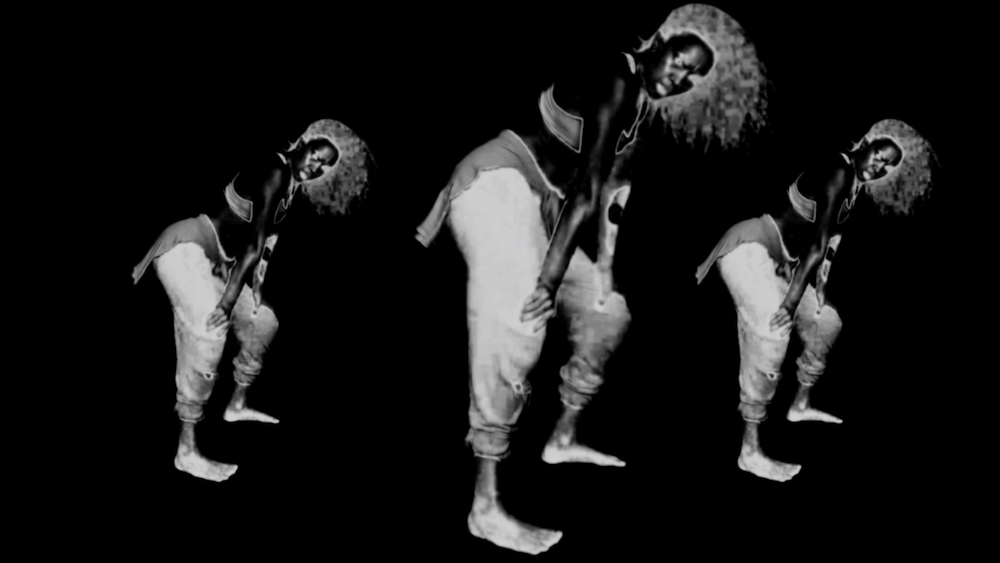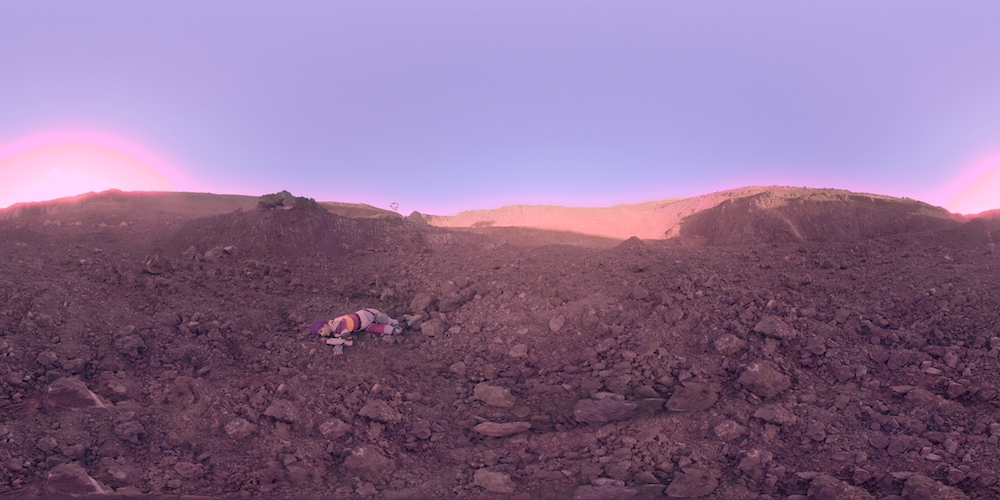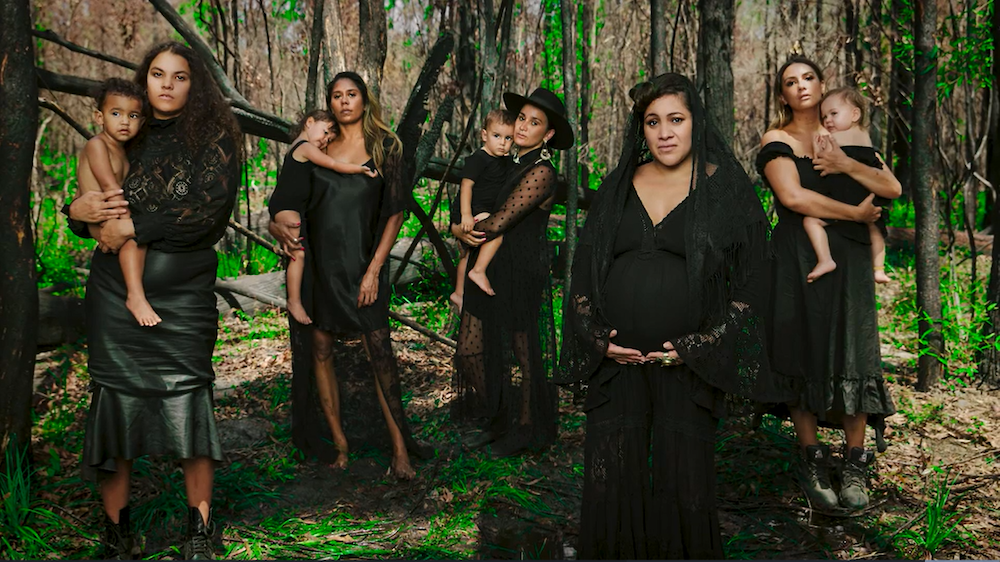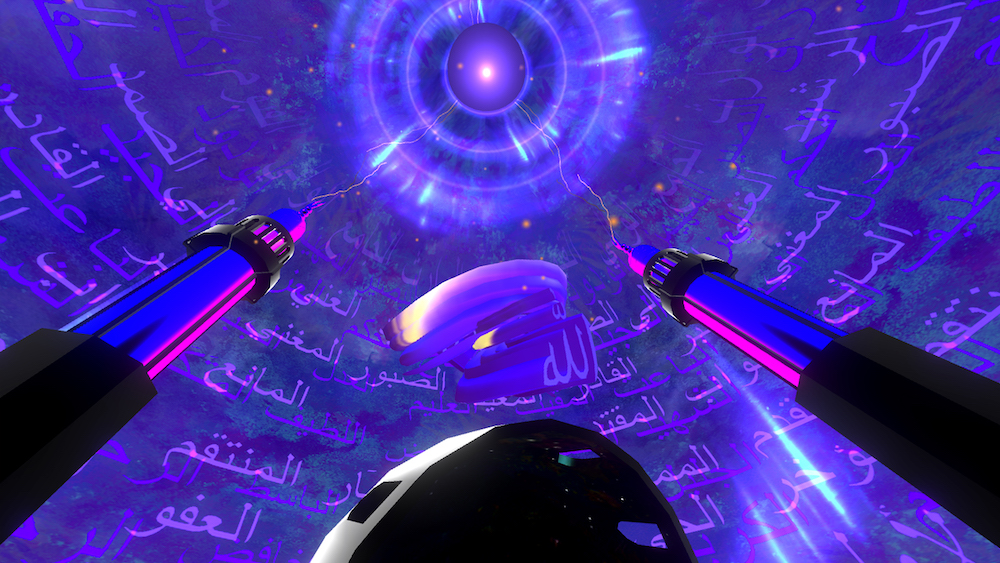The Summoning of a Polyphonic Apparition

By Katie Paine
26 June, 2020
The online space of the internet stretches out before us. It is a mercurial architecture of ghostly structures, dizzying in scope, a dark space of preternatural networks. We accept images as evidence of events, allowing them to copulate with others, in order to birth thousands of uncanny doubles. This polyphonic realm becomes a demented and theatrical Greek chorus. Reply. Screenshot. Live Stream. Comment. An image of trauma brings tears to our cheeks, across continents and the ages of time. Others may feel a prickling numbness when they encounter the same image again and again. It haunts every screen. This polished lens mars the image beneath it with a slimy apathy. In this hauntology, history cannibalises itself. Images circulate in the labyrinth, bereft of their original context in an endless trajectory of mourning. We tear images away, peeling them from the plane of one event, only to superimpose them on to another. The internet is historical, but also supernatural.
Despite feelings of digital fatigue, HTTP.PARADISE, curated by Naarm/Melbourne-based curator Jake Treacy and hosted on Incinerator Gallery’s website, is a prized viewing. According to its synopsis, the exhibition looks out towards a more utopian horizon: a space of unbridled solidarity, responsiveness and accessibility. The works investigate the impact of media and internet modalities on the body’s experience in time, space and physical existence, conjuring the image of a spectre that haunts this space.
Following in the footsteps of platforms such as Vdrome and the more local Recess, HTTP.PARADISE gifts us the opportunity to engage with video artworks outside the confines of time and place, eschewing the discomforts of being a body in the public world. I can adjust volume. I can press pause when something strikes my attention. I can close the screen when I need to and return when I am ready. It is these freedoms—often not afforded within the gallery institution—that allow me to fully immerse myself in video for the first time in years.

Louise Terra & Rachel Feery, Nature Calling, (2019)
360० Virtual Reality Music Clip, 5:02min, courtesy of the artist
HTTP.PARADISE is a penumbral space, where unknown phantoms move amongst the shadows. Viewers are given the option to easily access text about each project, which creates intervals within their experience: they are pulled out of the video space into a more didactic one. (I personally never read didactic texts before encountering an artwork.) Regardless, the text creates a transitional interface, glowing out from its black background, where we can pause to step in and out of each work.
Works by Angela Tiatia, Hannah Brontë and Mohamed Chamas give voice to the ways in which living bodies are forced into a position of vulnerability within imperial bureaucratic structures. In Tiatia’s video, ‘Interference’ (2018), dancing figures cavort across a dark screen. Their appearance is edited and inverted, so identity markers are blurred. The dancers vanish and materialise repeatedly in a manner evocative of the inscrutable entities in early twentieth century ectoplasmic photography (which attempted to capture ghosts). Over the course of the video, the footage degrades, pixelates, and gives way to an onslaught of flashing images. Tiatia shows us photographs of the human body in all its incarnations: a crowd surfer surrendering to waves of sound, soldiers stalking through the grass at night, mangled bodies left in the wake of war’s destruction, and what looks like a police officer ferociously pinning a victim against a wall. Tiatia positions the joyous dancing body as a figure of resistance against colonial powers that degrade, racialise and idealise bodies.
Hannah Brontë co-opts Victorian-era photographic portraiture in ‘tellus terra’ (2020). In this video, a small gathering of women, draped in black mourning attire with children in arms, stand amidst a forest recently struck by an inferno. Here the forms of these women, who are grieving their slaughtered country, mirror the forms of the scorched trees. This scene is set to a soundtrack that at times sounds like rain, and, at others, resembles the crackling of a dying conflagration. We are then greeted by stills of each solitary woman, whom Brontë identifies as ‘traditional owners [and] others visiting from lands connected and affected by rising seas.’

Hannah Brontë, tellus terra, (2020)
digital moving image, 3: 19min, courtesy of the artist
Both the terms tellus and terra can be defined as ‘earth’ in Latin. The goddess or mother of the earth is named Tellus Mater or Terra Mater, and these names are used interchangeably in Roman mythology. tellus terra speaks to the devastating bushfires that swept across Australia in 2019 and 2020. Brontë’s heroines do not deviate in their unwavering stares, holding the Australian Government accountable for its lack of action, support, and its denial of Indigenous sovereignty and land maintenance practices. The figure of the mourning woman can be seen as a force for radical change. In the horror genre and in Gothic literature, ghosts are often depicted as mourning women, propelled by the enormity of their grief to wreak havoc upon the world of the living. Certainly, the ferocity of women as a force for change is evident in Brontë’s work, in the startling green hue of verdant undergrowth that billows beneath the women’s feet.
The body’s transcendence of the physical through digital technologies is envisioned as a mode of defiance in Mohamed Chamas’ video ‘سايبر تصوف.(cyber tasawwuf)’ (2018), originally intended to function in virtual reality. The work reflects upon Chamas’ own experiences and observations of the Muslim body—a body the Western gaze has violently reconstituted as a monstrous other. The work takes the Islamic mystic Sufi meditation, known as Lataif-e-Sitta or the six subtleties, as a point of departure. Chamas’ video, organised into six poetic stanzas, positions us inside a cosmic or temporal body. Images and text dance, warp and melt to create a space of uncertainty. Inside this space we can recognise the forms of a prayer mat, ruined ancient structures and the slick, pristine face of an iPhone, as well as a minaret tower used for the Muslim call to prayer. This space speaks to the elaborate maze of decorative Persian mosaics, which in turn mirrors the nebulous web of data networks.
We cannot deny that the realm of VR and digital surveillance is haunted by the military uses of these mediums. Virtual space is co-opted to collide with the physical realm in astonishing acts of violence. In ‘سايبر تصوف.(cyber tasawwuf)’, it is suggested that architecture is also a politicised space, often used for exclusion and to perpetuate imperialist projects that broadcast the might of the institution. These systems reduce the body to a ghost: whose bodily suffering is utterly disregarded, whose agency and visibility are eradicated.
As Bahar Sayed suggests in ‘Faithful Infidel’, ‘Sufi poetry espouses that being is not of the body but of the soul.’ Chamas’ work builds upon this notion, taking the body as a ghost and re-envisioning it as a liberating form: for ghosts may not be able to enact touch, but poltergeists can tear down whole structures.
Another work originally intended to exist in virtual reality is ‘Nature Calling’ (2020), Rachel Feery’s collaboration with electronic musician Louise Terra. Like in Brontë’s work, the word Terra recurs as the name of the video’s protagonist. They can be recognised by their shock of violet hair and hybrid clothing, which could be at home at a rave, or in a Mad Max film. Terra stands in a parched craggy valley, staring out to the horizon at something I cannot see. I become aware of the unseen action taking place outside my field of view. I soon realise the video is intended to be viewed in 360° and that I must pause the video and begin watching again. Guided by the click of my mouse, I must follow, searching through the infinite rocky space as figures come and go like strange apparitions.
Terra is stalked by a shimmering figure devoid of features, they struggle with one another until Terra comes across a spindly plant, picks a lotus from its stem and is greeted by a welcome deluge of rain. The strange double returns and both figures disappear: whether they have been forcibly taken away, or gently called home is unclear. For me, the work possesses a captivating indeterminacy, forever haunted by the many possible ways in which the narrative can unfold as we each navigate the screen.

Mohamed Chamas, تصوف (cyber tasawwuf), (2018)
video (recording of Virtual Reality experience), 4:01min, courtesy of the artist
Similar to Chamas’ work, Felix ter Hedde and Hannah Hotker explore the dichotomy between the body’s experience of being online and the reality of online ‘space’ in ‘sicksickcitizen’ (2019). We adopt the guise of *jane66citizen* in this role player video game, which seems devoid of any linear narrative or discernible objective. *jane66citizen* is dressed as the historically marginalised figure of the witch, with a black cat familiar clutching to their chest. Lifted by some unseen force out of onyx rippling waters, we materialise inside what might be a deranged fun park or some ersatz shopping mall. The ‘stalls’ are replete with bright neon signs, advertisements whose wares seem to be a bombardment of images familiar to us from the deep bowels of the internet: ranging from pornographic to self-help, commercial to the occult. This video moves at a frantic pace, it’s hard to hold on to detail, as if the mind is failing to catch up to the eyes. Despite ever-changing aesthetic styles, there is something uncannily identical about each stall. Our protagonist walks intently through this world of pandemonium: they do not react to their surroundings, whether they are passing through what looks like a luxurious patio built on The Sims, or the shadowy corridors of a crime scene.
Are they apathetic in their constancy? Determined? Or are their steady steps propelled by fear? A computer-generated voice that might be the subconscious of *jane66citizen* speaks of gender, trauma, disassociation and the tenuous divide between reality and simulacrum, all set against a throbbing techno soundtrack. The phrases haunt us at the same pace that the ‘worlds’ or ‘stalls’ change with cyclical repetition. And then, just like that, we are returned to the peaceful primordial ocean from which we first came. The artists intended *jane66citizen* to transcend boundaries in order to interrogate a space of ‘capitalist purgatory.’
In the world of ‘sicksickcitizen’ no one engages with the protagonist; they float through walls like a spectre. It is their very mobility within this liminal space that is revolutionary—the body becomes incorporeal in order to poke holes in organised systems.
Artist Tristan Jalleh’s collaborations with musician Corin Ileto use perplexing optics to draw us into similar eschatological visions. A camera pans over desert mountains: day dissipates into night, with sudden speed we glide at a dizzying angle across the surface of a glowing billboard. We stalk corridors in a way that is reminiscent of first-person shooter games. An uncomfortable suspense builds as we reach a room where robotic structures begin to sprout cherry blossoms. They bow down to a floating rocky mass dripping with blood. Jalleh’s work is often laden with cryptic signs, and here we act as detectives, searching for meaning in these portentous visions. We recognise icons of trauma: the trauma that emanates from the epicentre of empires, but also the trauma of a colossal technological change moving faster than our bodies can grasp. The shock of time passing. This otherworldly realm in which Jalleh and Ileto enclose us in confounds time and space: the same streaks of ash seem to tumble through the wind, from one scene of desert ruins into the neon haze of a cityscape in another.
Patrick Hase and Bridget Chappell’s ‘Yubaba‘ (2019) evokes the spell of an intoxicating night out, depicting remembered sequences of a night at a club. Structured like a music video, we try to make sense of mnemonic flashes, as the work explores the anguish of remembered events mediated through degraded footage. Repeated throughout the video is a CGI figure who dances in a slow and constricted manner. Their presence is unstable, and it seems they cannot extricate their body in space: like the disorienting feeling of the mind being torn from the body amidst the pounding landscape of a dance floor.
Navigating our internal experiences in the midst of social and virtual spaces is again explored through the use of strobing light. Youjia Lu’s ‘Super(imp)osition: enduring (non-place)’ (2018) depicts a lounge-room lit harshly in blue light, like the domestic interior of a horror film. Projected on the lounge-room wall is an overexposed, flickering sequence in which a woman’s tongue lolls from her gaping mouth. It’s not clear if her face is contorted in ecstasy or anguish. The room plunges from light to dark and these flashes are described as being ‘a medium to channel a ghost.’ Indeed, once the repetitive cycle of the video is clear, our eyes begin to dilate and adjust, apprehensively waiting for movement in the shadows.
Treacy describes HTTP.PARADISE as an online ‘oracle’ and certainly, with his customary fantastical flair, Treacy has built an exhibition to help us conceive of possible futures. It is interesting to note that paradise is never offered within this body of works—instead the videos demonstrate possible ways we can interrogate and dismantle our current reality, if we are ever to ascend to an elusive utopia. This collection of works, made over the past few years, are broadcasted at a time of collective mourning: for land, for victims of COVID-19 and against state-sanctioned brutality. An era of grieving can birth phantoms, but these artists present an alternative perspective to the wrathful ghost. The spirit may not be benign, but it can act as a catalyst for powerful reform.